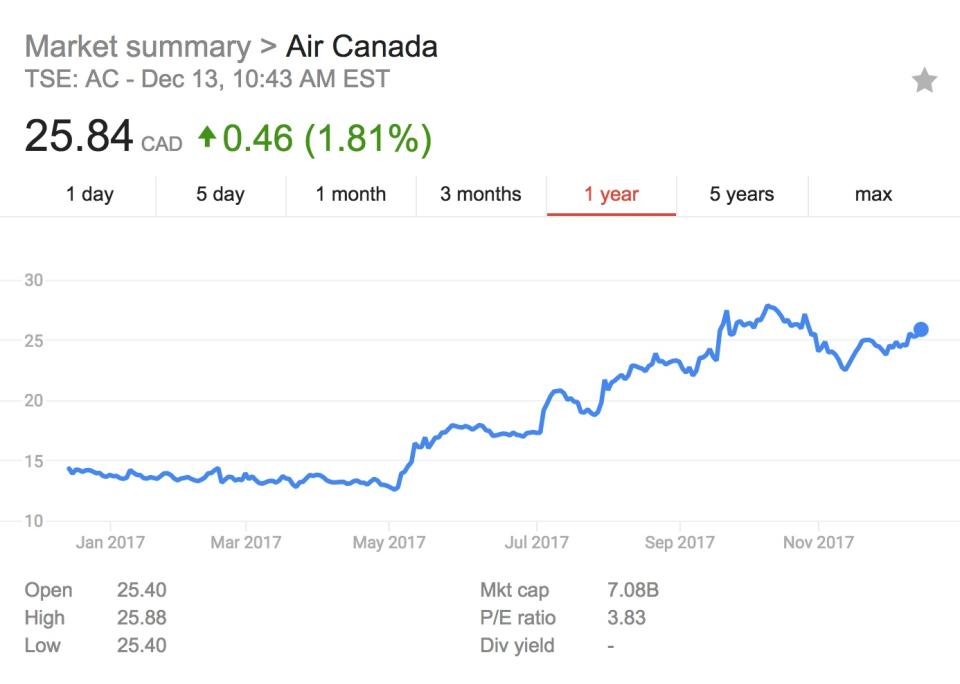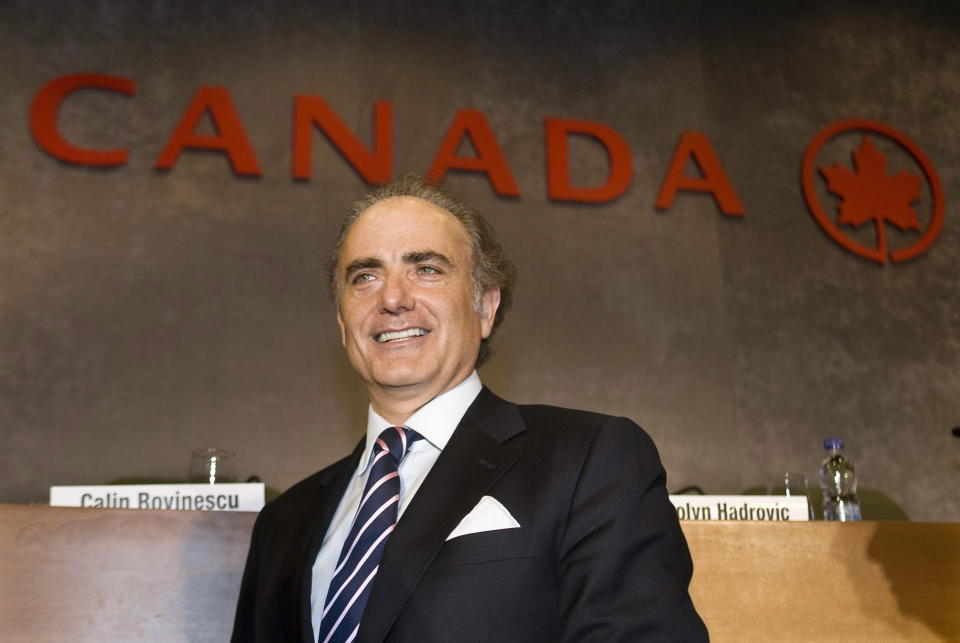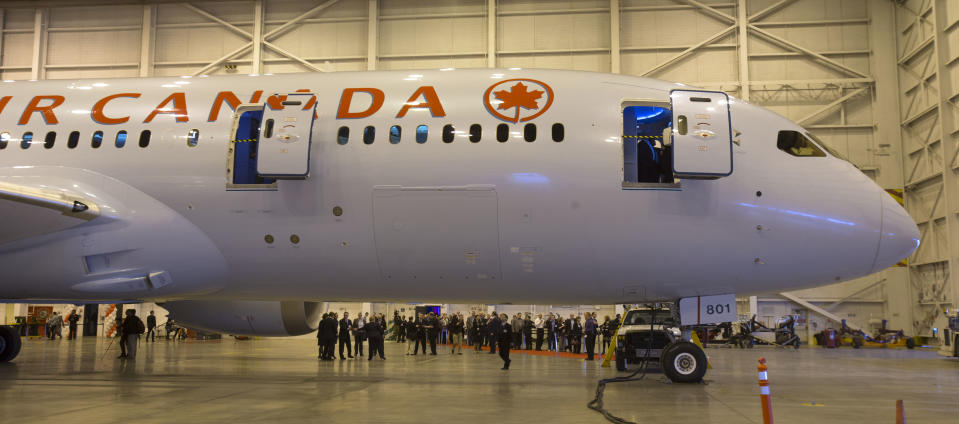Year in Review: Air Canada is our 2017 Company of the Year

This article came within 59 feet of not being written.
On July 7, Air Canada flight 759 was cleared to land on runway 28R at San Francisco International Airport. The pilots, however, attempted to land on a parallel taxiway where four other planes loaded with passengers and fuel sat, pulling back up only when they were “less than a second from a disaster,” according to one report.
But close calls are not catastrophes, and the captain and co-captain of the A320 jet — who had logged 20,000 and 10,000 hours of flying time respectively — landed the plane safely and without incident.
This is among the least remarkable events in Air Canada’s year.
The airline, which filed for bankruptcy protection just 14 years ago, has achieved one of the most impressive turnarounds in the transportation industry.
In 2017, its share price hit a 10-year high.
It was named winner in the Finance category of the 2017 Airline Strategy Awards, because of its successful financial rejuvenation.
On June 29, it carried 166,850 passengers, setting a single-day company record. Nearly one million people flew AC between June 29 and July 4.
Earlier this year, financial analysts from CIBC, RBC Capital Markets and Altacorp deemed the stock “undervalued,” when it was $21.74 a share. They were right.

The company’s share price consistently crushed expectations in 2017, rising 83.5 per cent between January 3 and December 12. But Air Canada CEO Calin Rovinescu, who took the reins in 2009 when shares were trading at just $0.80, says he doesn’t deserve all the kudos.
“I’m not being immodest in saying that the kind of transformation that the Air Canada embarked on is not the responsibility of one person,” he said in an interview with Yahoo Canada Finance. “The first order of business was stabilizing the company and ensuring it lived to fight another day. That meant bolstering the liquidity, having a strategy to deal with a very significant pension plan deficit and the high costs of our operation.”

In recent years, the airline’s profitability — it reported record third quarter 2017 EBITDAR (earnings before interest, taxes, depreciation, amortization, impairment and aircraft rent) of $1.388 billion — is in part due to the Rouge brand it launched in 2013 to compete with low cost airlines that had entered the market. Rouge, much maligned by passengers in the past — notably actor Rob Lowe back in 2014 — is known for smaller seats and reduced legroom. But all this, and the lack of free food, comes at a cost — specifically, a lower one for flyers.
“Rouge is not an ultra-low-cost carrier,” Rovinescu says. “It’s a leisure carrier that is destined towards leisure markets in the sun destinations largely in the wintertime, and in the European destinations largely in the summertime. We estimate that it has a 25 to 30 per cent lower cost, depending on the aircraft type that we use.”
For the sixth time in eight years, Air Canada was named Best Airline in North America at the 2017 Skytrax World Airline Awards in June. It also won Best Long Haul Airline in the Americas for 2018 by AirlineRatings.com.
But industry accolades and spreadsheets aside, Air Canada has achieved something many large companies can’t get quite right: An engaged and empowered work culture. For the fourth consecutive year, the country’s flagship carrier made “Canada’s Top 100 Employers” and “Montreal’s Top Employers” for 2017. It was also number two on Canada’s “Most Attractive Employers 2017” list by Randstad Canada. Rovinescu puts forward a simple reason for this.
“Generally speaking, employees are empowered,” he says. “They have a culture of entrepreneurship. We’d like to think we’re a big company that behaves like a small company, that can make decisions more quickly.”
According to Glassdoor, a job site that aggregates workplace reviews by current and former employees, the best things about working at Air Canada are “travel benefits,” “flexible schedule,” and “great environment.” Seventy one per cent would recommend the company to a friend, and 75 per cent approve of Rovinescu as CEO. The company has also been in growth mode over the last few years, hiring, among other positions, hundreds of flight attendants for new Vancouver and Calgary routes launched in 2014.
“We’ve hired, over the last five years, about 4,000 more people,” Rovinescu says. “In terms of Canadian numbers, at periods of fairly slow growth, I don’t think there are many companies that have [done that]. For every single position, we have more than 100 applications.”

Armed with 13 new international routes, an expanding fleet of Dreamliner 787 aircrafts — some of which the company sold for a profit, then leased back for commercial flights — and a laser focus on upgrading its luxury brand experience, the company is soaring into 2018 with an approximately 3,000 per cent share price increase since 2009. And they have a plan.
“We continue to strive to improve the product,” Rovinescu says. “We want to have better on-time performance, we want to be able to have a better airport experience — not just the onboard experience. We often use the expression, ‘analysis paralysis.’ Let’s make decisions.”
Download the Yahoo Finance app, available for Apple and Android.



